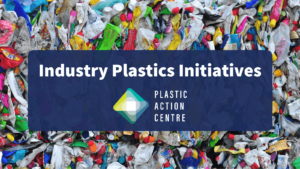GFL launches first ESG targets, aiming to reduce GHG emissions 15% by 2030
A large Canadian waste management company, GFL Environmental, has set its first Environmental, Social, and Governance (ESG) goals after completing years of assessments.
These goals, with an achievement date of 2030, include Scope 1 and 2 emissions reductions and the increase of recyclable plastic recovery by 40%.
Story Preview
Goal: Decrease total Scope 1 and Scope 2 GHG emissions 15% by 2030
Baseline: 3.94M metric tons of CO2 equivalent Scope 1 emissions and 33,000 in Scope 2 emissions in 2021
Like other large competitors, GFL is focused on reducing greenhouse gas emissions from its landfill and fleet operations. The company’s landfill portfolio has doubled to more than 90 in recent years, due to acquisitions, and those sites comprise 84% of its overall Scope 1 and Scope 2 emissions. GFL says it is focused on reducing fugitive landfill emissions through investments in renewable natural gas projects, as well as other efforts. The company notes it is also participating in tests of monitoring tools “using satellite, aircraft, drones, and fixed sensors to measure landfill gas emissions more accurately.” Additionally, the company says it is “committed to a year over year reduction in our non-GHG related air emissions.”
GFL’s fleet emissions comprise 14% of the overall total, followed by electricity consumption at 1%.
Goal: Increase recyclables recovered at GFL MRFs 40% by 2030
Baseline: 1.24M metric tons in 2021
GFL reports operating more than 30 MRFs, with fiber and plastic as its highest volume commodities. The company says it will make progress toward this target by increasing volumes collected and investing in new technology to expand its sorting capacity. GFL reported 15 AI-supported systems and 59 optical sorting units at its MRFs through the end of 2021. An upcoming facility in Pontiac, Michigan, with capacity for more than 110,000 metrics tons per year will further expand volumes.
Cole Rosengren, WasteDive, Nov 29, 2022.



